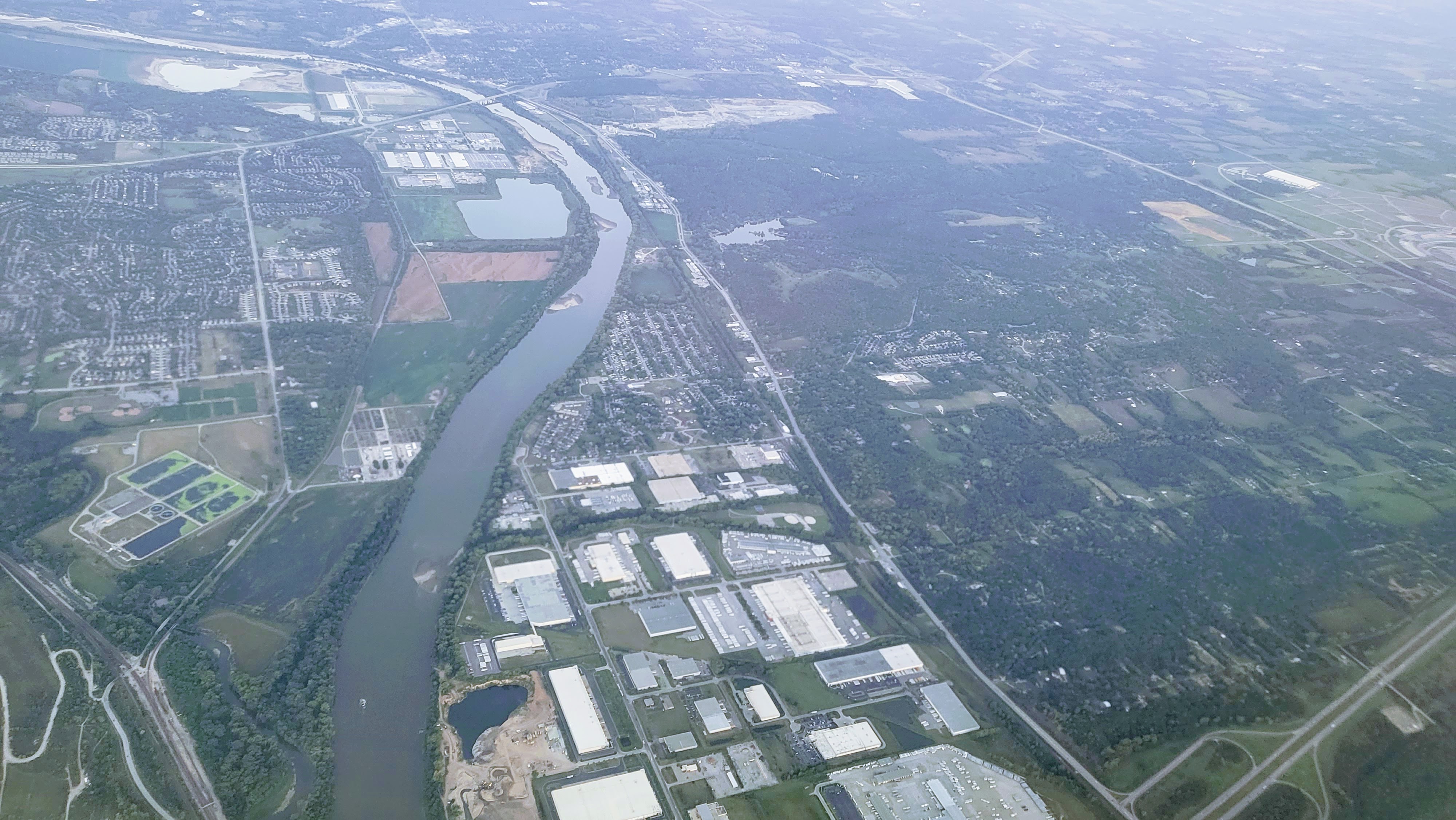| |
LOWER MISSOURI RIVER BASIN FLOOD RISK MANAGEMENT (FRM) STUDY KS, MO, IA, NE
Authorized: Section 216 of the Flood Control Act of 1970
Type: Flood Risk
Developing solutions for:
-
Increasing flood risk, economic damages, vulnerability, and repair costs in view of the 1993, 2011, 2019 and other floods targeting from Rulo, NE to the mouth
-
Concerns related to implementation approaches and a recognition that status quo of levee systems and FRM not sustainable by the four lower basin states
-
Lack of regional prioritization of areas needing flood risk management improvement
BLUE RIVER BASIN INTEGRATED STUDY KS & MO
Authorized: Resolution of the House Committee on Transportation and Infrastructure Resolution dated 24 September 2008
Type: Multipurpose Ecosystem Restoration
Developing solutions for:
-
Loss of habitat along the channel corridor resulting in decreased connectivity
-
Decreased water quality in the basin
-
Increased risk of flooding in areas that lend themselves to nature-based flood protection
-
Integrated planning across many jurisdictional boundaries
KANSAS RIVER BASIN KS
Authorized: Section 729 of WRDA 1986
Type: Multipurpose
Developing solutions for:
-
Loss of water supply and quality from ongoing erosion and sedimentation
-
Degrading environmental resources
-
Increasing drought and flood risk
-
Impacts to recreational and social amenities
SHUNGAGNUNGA CREEK KS
Authorized: Section 216 of the Flood Control Act of 1970, P.L. 91-611, Dec 31, 1970
Type: Multipurpose Flood Risk
Developing solutions for:
-
Yearly flooding of residential and commercial development in the basin
-
Potential multipurpose benefits associated with ecosystem restoration, water quality, recreational enhancement, and other social benefits
JERSEY CREEK NATURALIZATION KS
Authorized: Section 216 of Flood Control Act of 1970, P.L. 91-611, Dec 31, 1970
Type: Ecosystem Restoration
Developing solutions for:
-
Three miles of degraded Jersey Creek stream corridor from previous flood risk projects
-
Degraded stream sinuosity, pool-riffle-run sequences, and riparian corridor habitat
-
Incorporation of compatible trails, stream access sites, and water quality improvements
ROCKY FORD KS
Authorized: Section 216 of Flood Control Act of 1970, P.L. 91-611, Dec 31, 1970
Type: Ecosystem Restoration
Developing solutions for:
-
Loss of aquatic habitat connectivity in the Blue River below Tuttle Creek Dam
-
Removal of existing stream impediments at the Rocky Ford site
-
Compatible recreational amenities that increase river use and access
SMOKY HILL KS
Authorized: Section 216 of Flood Control Act of 1970, P.L. 91-611, Dec 31, 1970
Type: Ecosystem Restoration
Developing solutions for:
-
Downtown revitalization of City of Salina infrastructure, parks, and stream corridor
-
Old Channel habitat degradation from previous Corps flood reduction measures
-
Impacted in-stream, riparian, and wetland habitats
| |
LOWER MISSOURI RIVER BASIN NAVIGATION STUDY
Authorized: Section 216 of the Flood Control Act of 1970
Type: Navigation
Developing solutions for:
-
Loss of function and reliability of the Missouri River Navigation System (BSNP)
-
Increasing overall costs of navigation to industry
-
Concerns with navigation safety
-
Increasing cost effectiveness of BSNP operations and maintenance
LOWER MISSOURI – HOLT (MO) AND DONIPHAN (KS) COUNTIES MO & KS Authorized: Section 216 of the Flood Control Act of 1970
Type: Flood Risk
Developing solutions for:
-
Reoccurring flood losses related to the existing patchwork of levee configurations that includes private and PL84-99 non-Federal levees
-
Increasing flood risk to a major transportation corridor that includes railroads and interstate highways.
-
Increasing flooding for several small towns and thousands of acres of farmland
GRAND RIVER BASIN MO & IA
Authorized: Consolidated Appropriations Act, 2021
Type: Ecosystem Restoration
Status: Feasibility study complete. Expected to initiate Preconstruction Engineering and Design (GI) moving into construction (CG) in 2024.
Project Benefits:
Relief from flooding and erosion for Missouri’s Pershing State Park and the people within the Grand River Basin region comprised of 12 counties in Missouri and Iowa. Forty thousand acres of wet emergent wetland, bottomland forest, and aquatic riverine habitat will be restored and enhanced by the project.
LOWER MISSOURI – JEFFERSTON CITY L-142 MO
Authorized: Section 216 of the Flood Control Act of 1970
Type: Flood Risk
Developing solutions for:
Reoccurring flood impacts to industrial land uses, agricultural as well as to critical infrastructure including municipal water treatment and the Jefferson City
LOWER MISSOURI – BRUNSWICK L-246 MO
Authorized: Section 216 of the Flood Control Act of 1970
Type: Flood Risk
Developing solutions for:
-
Reoccurring flooding at the confluence of the Grand and Missouri Rivers that affect the town of Brunswick and surrounding farmland.
-
Increasing flood impacts to critical infrastructure including municipal water treatment and railroad infrastructure
-
Lack of investment in the community
LITTLE BLUE RIVER WATERSHED STUDY MO
Authorized: Resolution of the Senate Committee on Environment and Public Works for the Little Blue River Basin, Missouri, 108th Congress, 2nd Session, June 23, 2004
Type: Multipurpose Flood Risk
Developing solutions for:
-
Increasing flood risk in an expanding urbanized basin in Metro Kanas City
-
Increasing flood frequency in this area
-
Failing infrastructure in the basin
OSAGE RIVER BASIN STUDY MO
Authorized: Section 201(a) (22) of WRDA 2020, pg. 1407
Type: Ecosystem Restoration
Developing solutions for:
-
Destabilized river impacting natural resources as well as landowners
-
Barriers to fish passage
-
Infrastructure impacted by bank erosion
|





